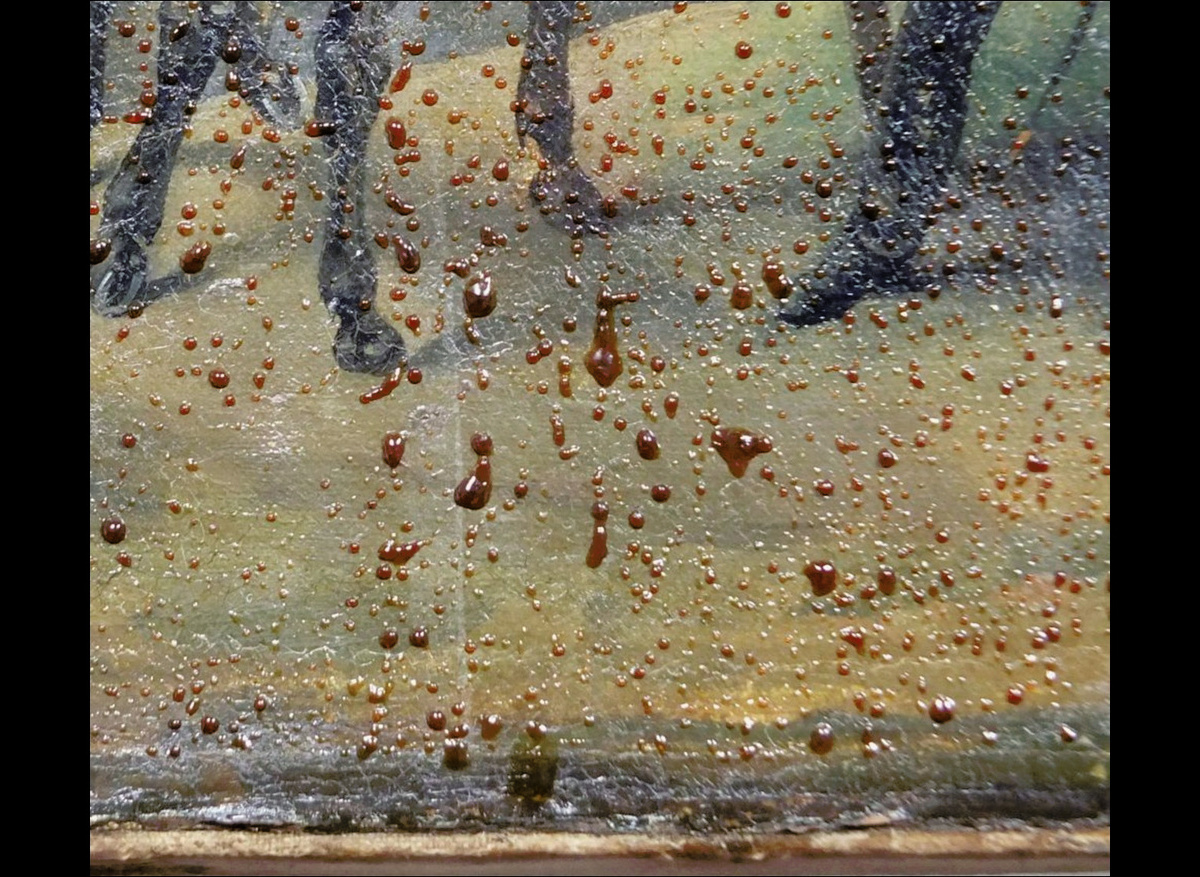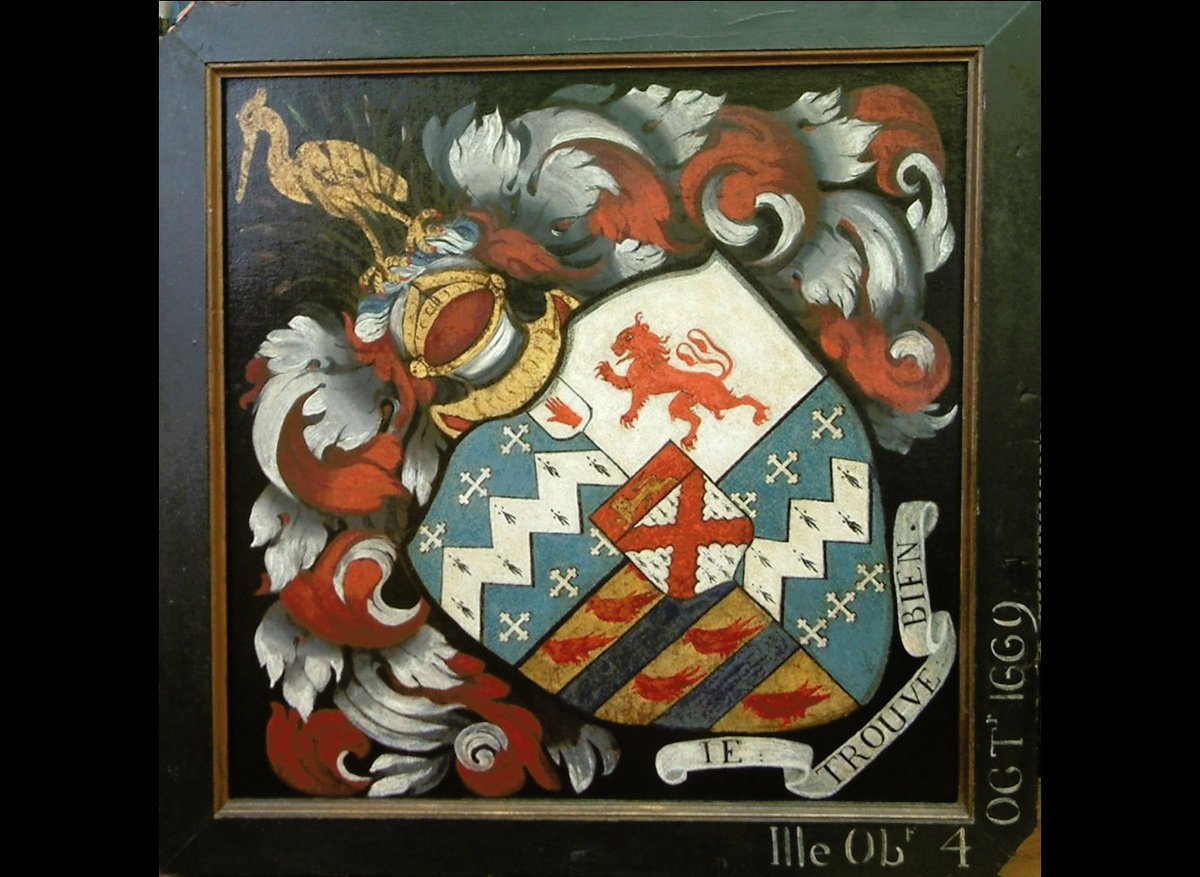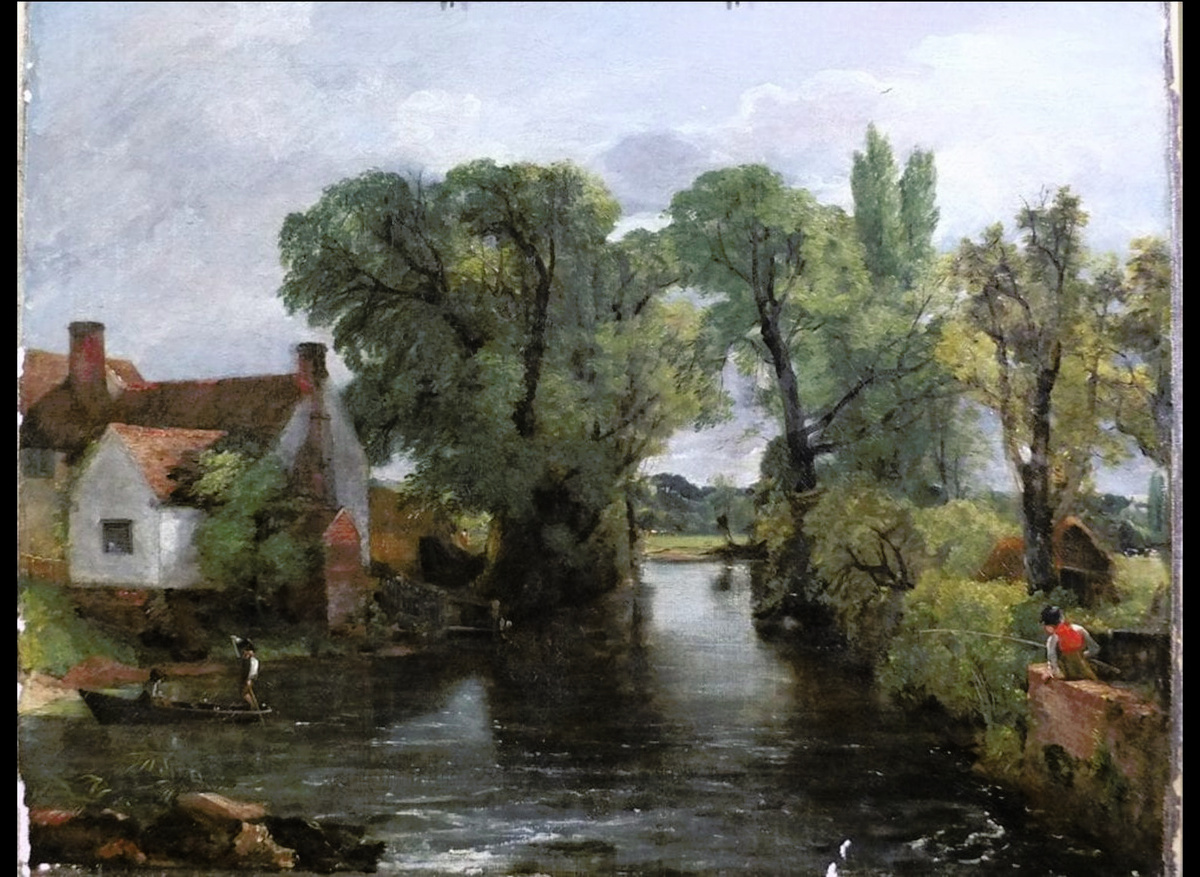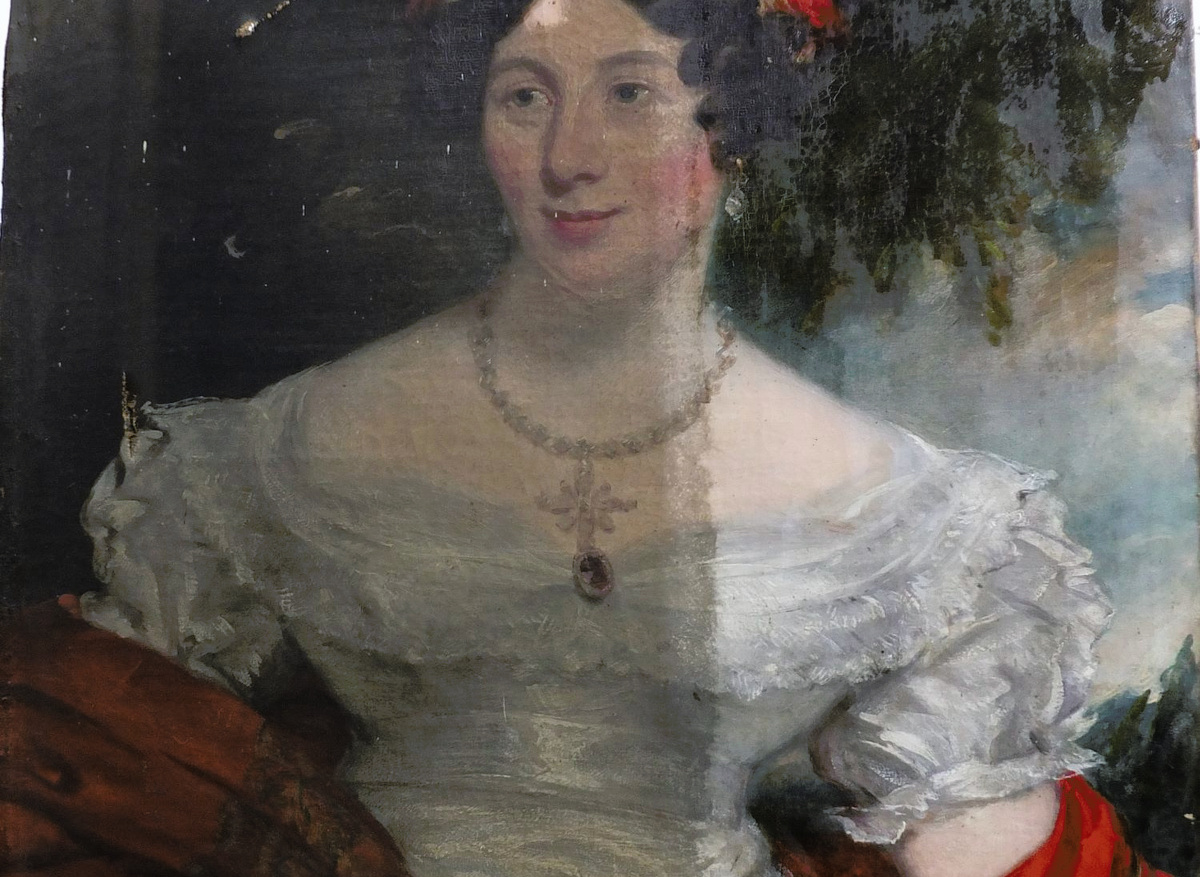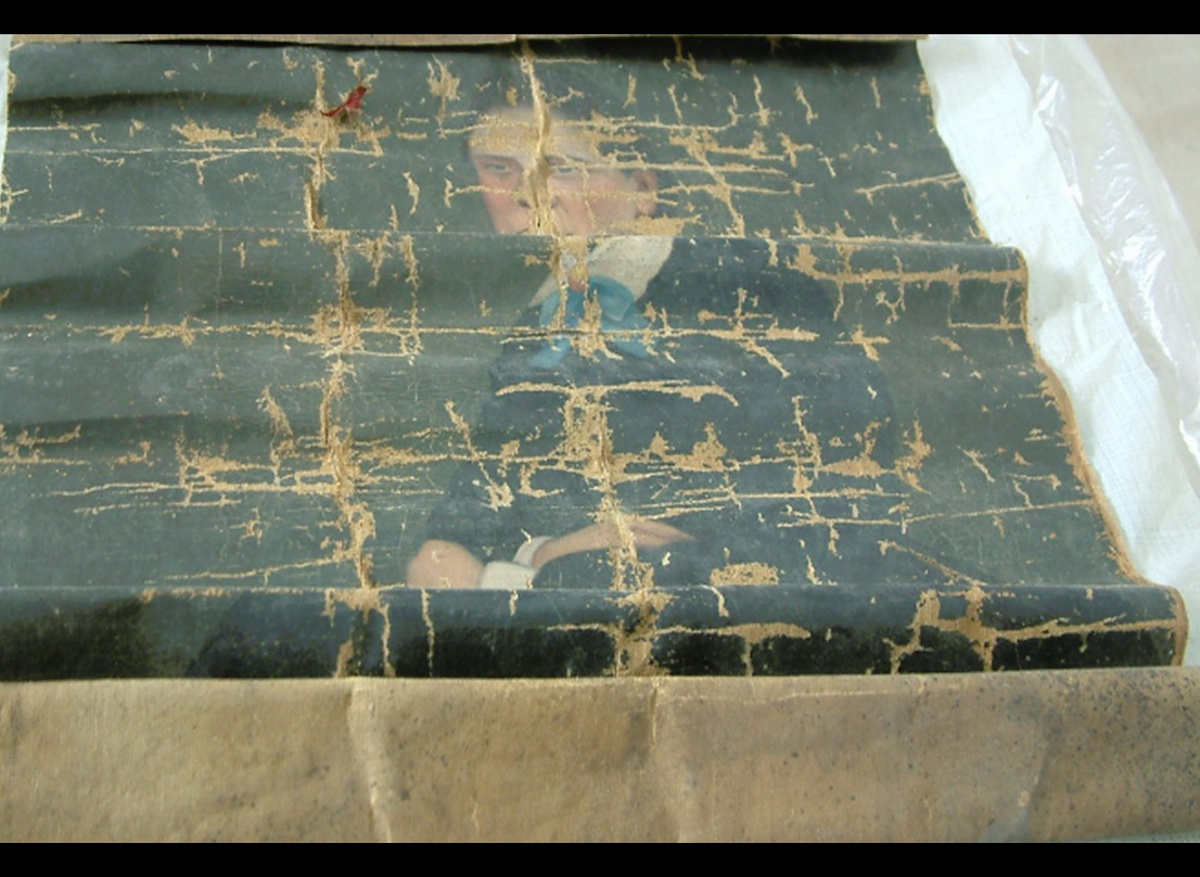Key to all Rosalind’s work is personal communication with the client, so that expectations are clear and are achieved. Thorough, considered, clearly argued approaches to conservation form the ethos of this practice, with both pre- and post-treatment documentation being standard. Rosalind has cared for whole collections, carrying out assessments and treatments, and where necessary creating documentation systems for recording them.
Her long experience of all aspects of painting conservation and restoration range from Constable, Gainsborough and Stubbs in public collections to family portraits used for target practice and then kept in the coal cellar!
The whole object is cared for, whether wooden stretchers, canvas, panels and board, or the unconventional materials used from the twentieth century onwards. Delaminating/flaking paint layers and paint losses arising from environmental damage are all treated. Dirt, darkened varnish and inappropriate or excessive old restoration are analysed and removed.
Conservation scientists are consulted for detailed analysis when required.
Rosalind’s expertise in working on hatchments and coats of arms in Churches includes liaison with Parish Councils, Church architects, builders, scaffolders, art removal companies and the stalwart Parishioners who have raised funds, often by applying for National Lottery grants.
Collections
Both the environment in which a painting is kept and its condition need to be assessed, and prioritised in the context of the whole collection.
Actions taken, and the rationale for them and treatment processes used are fully documented.
Transport, insurance and treatment are all arranged by the conservator.
Individuals
Private individuals who are unfamiliar with commissioning conservation become involved in the process, making their informed choices after clear assessments and accurately costed recommendations for treatment have been received.
The painting can be packed and transported by the conservator, and clear receipt documentation supplied recording insurance values and responsibilities. For long or complex projects detailed contracts are used.
Rosalind aims to give a very personal service, and is always happy to discuss details of proposals and to answer questions.
Insurance Reports
Paintings in Churches
Accredited members
Rosalind Whitehouse MA ACR FBAPCR
After graduating from the University of Edinburgh with a degree in Fine Art, Rosalind entered the government training scheme in conservation and restoration at the National Gallery, London.
Her subsequent career in private practice saw her caring for paintings in private and local authority museum collections, particular long-term favourites being the Colchester and Ipswich Museums with their Constable and Gainsborough pictures, and the Jockey Club collection of mainly equestrian art, which included work by Stubbs, Gainsborough and Munnings.
A conservator in private practice is rather like a GP, every conceivable problem with a painting comes into the studio, and solutions are found that are right for the picture and the client.
Client Testimonials
Ms Whitehouse’s proposals have been presented in detailed and comprehensive appraisal reports. I have found Ms Whitehouse helpful and approachable if and when additional information was required.
A key attribute is Ms Whitehouse’s ability to work with other contractors as at Kedington where the conservation of hatchments had to coincide with a tight timescale to match conditions made by funders and the redecoration of the nave.
James Halsall
Diocesan Advisory Committee for the Care of Churches
Over many years Rosalind Whitehouse’s professional input to conserving paintings in Colchester and Ipswich has proved essential. The collections range in date from 15th century panel paintings to the present day and significantly cover the work of Thomas Gainsborough and John Constable.
The work carried out on two Constable portraits not only revived those paintings but helped in correctly identifying the works as by Constable. Rosalind’s approach has always been thorough with carefully constructed methodologies that provide a detailed breakdown of the work to be carried out. This was very important in a public funded institution where budgets are tight.
Emma Roodhouse
Curator of paintings, Colchester and Ipswich Museums
Rosalind has restored pictures for me over many years and I have always been very impressed and pleased with her work. She approaches her work with great professionalism and yet is very approachable and friendly. One is informed before work starts with an extensive conservation report and estimate of costs and this is followed up on completion with a thorough treatment report detailing what has been achieved. Rosalind has restored a great variety of paintings for me over the years and I have always been delighted with the results; I have no hesitation in recommending her.
Nicholas Holloway
Collector and Dealer


